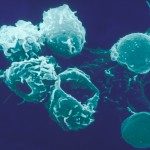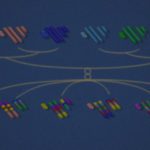Link to Pubmed [PMID] – 32457349
Link to DOI – 10.1038/s41598-020-65683-w
Sci Rep 2020 May; 10(1): 8734
Infection of mice with Rift Valley fever virus (RVFV) reproduces major pathological features of severe human disease, notably the early-onset hepatitis and delayed-onset encephalitis. We previously reported that the Rvfs2 locus from the susceptible MBT/Pas strain reduces survival time after RVFV infection. Here, we used BALB/cByJ (BALB) mice congenic for Rvfs2 (C.MBT-Rvfs2) to investigate the pathophysiological mechanisms impacted by Rvfs2. Clinical, biochemical and histopathological features indicated similar liver damage in BALB and C.MBT-Rvfs2 mice until day 5 after infection. However, while C.MBT-Rvfs2 mice succumbed from acute liver injury, most BALB mice recovered and died later of encephalitis. Hepatocytes of BALB infected liver proliferated actively on day 6, promoting organ regeneration and recovery from liver damage. By comparison with C.MBT-Rvfs2, BALB mice had up to 100-fold lower production of infectious virions in the peripheral blood and liver, strongly decreased RVFV protein in liver and reduced viral replication in primary cultured hepatocytes, suggesting that the BALB Rvfs2 haplotype limits RVFV pathogenicity through decreased virus replication. Moreover, bone marrow chimera experiments showed that both hematopoietic and non-hematopoietic cells are required for the protective effect of the BALB Rvfs2 haplotype. Altogether, these results indicate that Rvfs2 controls critical events which allow survival to RVFV-induced hepatitis.






